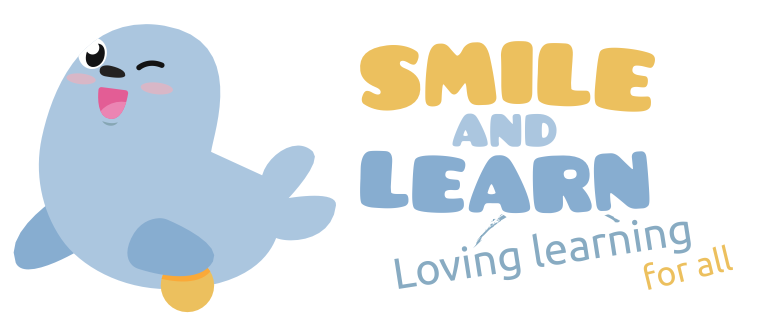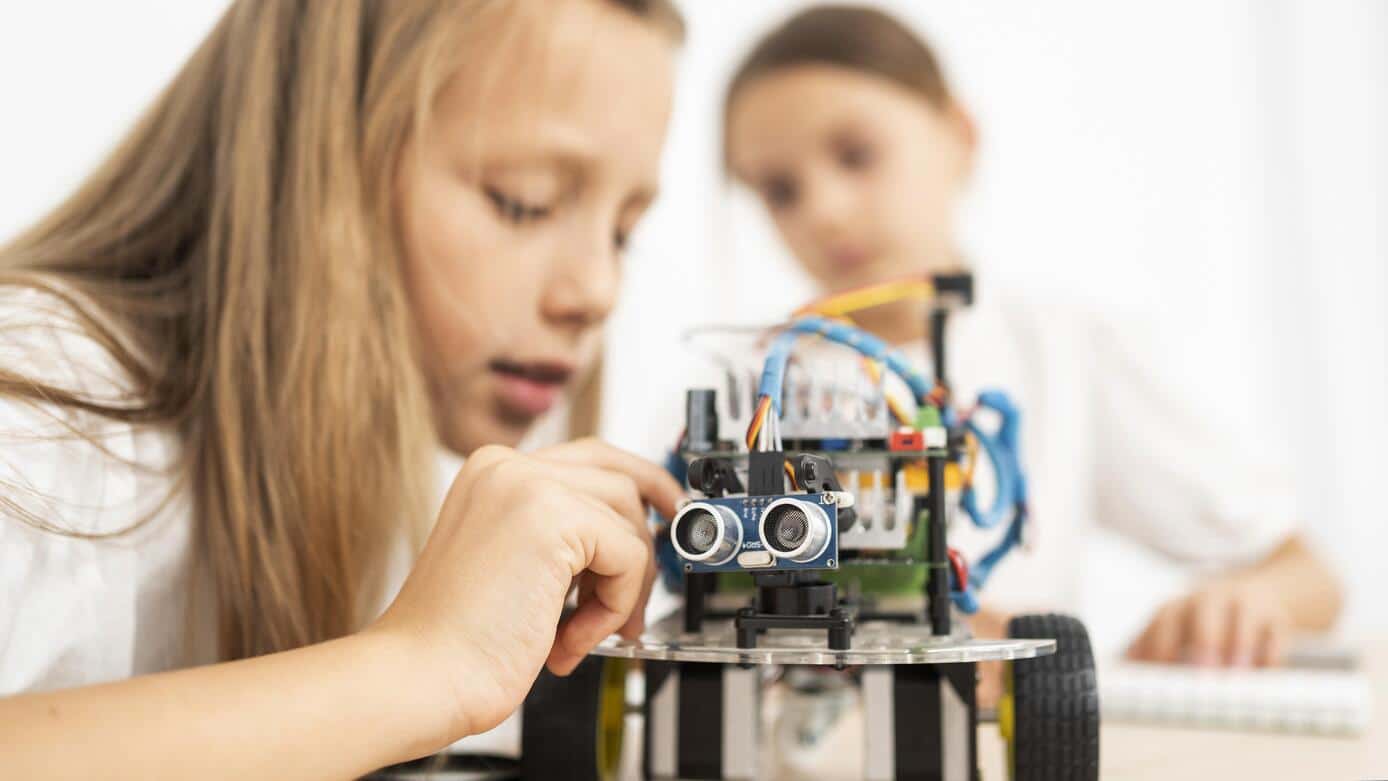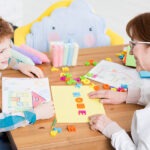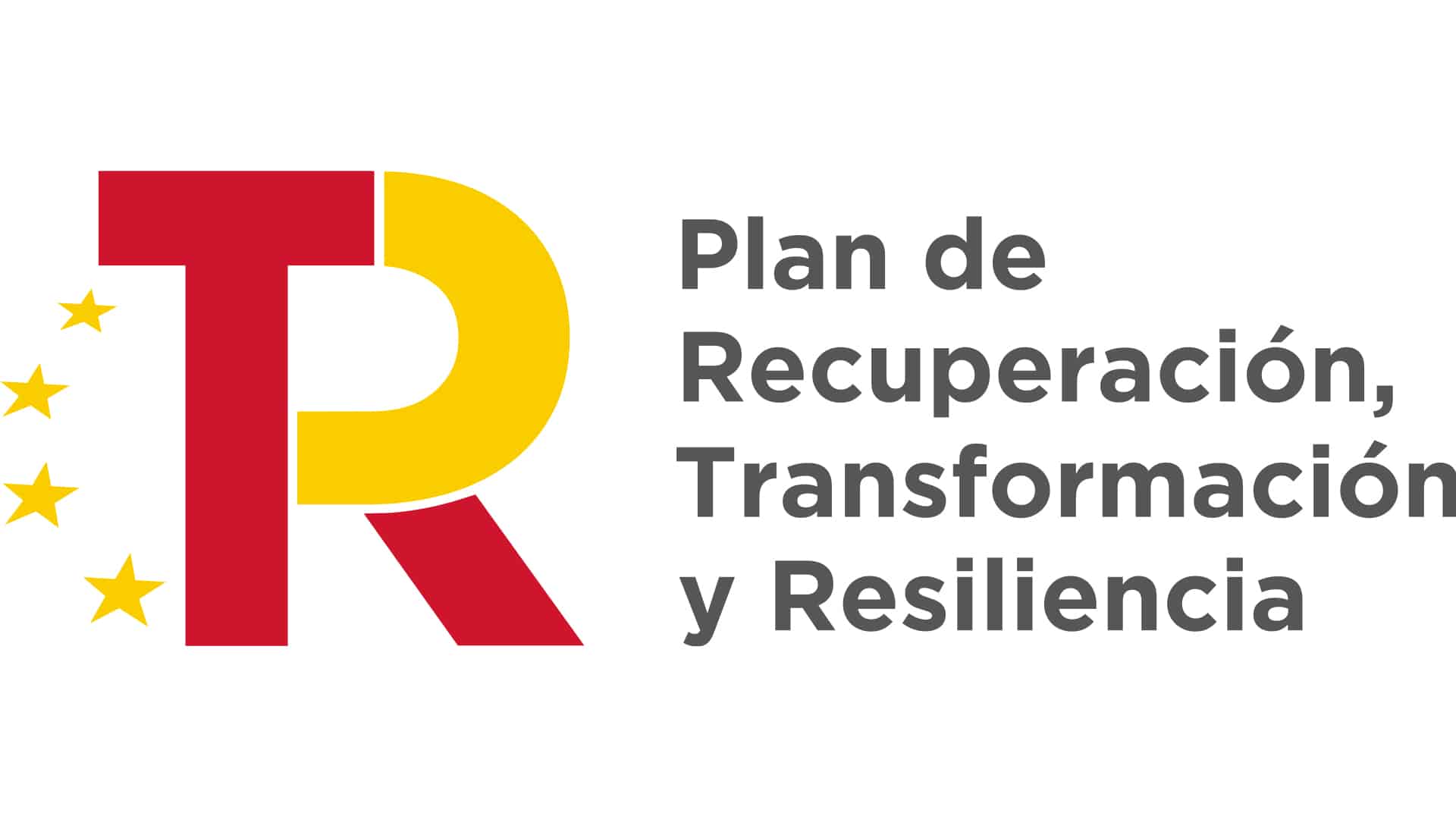At Smile and Learn we have talked several times about STEM (Science, Technology, Engineering and Mathematics) education. In recent years, this methodology has been implemented in schools with the aim of helping students develop skills related to ICT, critical thinking or mathematics. However, more and more voices are advocating the inclusion of one more letter in the equation: “A” for arts. In today’s blog post we are going to talk about these two educational approaches: STEM and STEAM.
These acronyms refer to different ways of teaching and learning science, technology, engineering, art and math. While both approaches share a common foundation, they also have some key differences.
First, the STEM approach focuses on developing skills in these areas (science, math, technology and engineering) and encourages critical thinking, problem solving and creativity. Students participate in hands-on projects and science experiments, learning to apply mathematical concepts and use technology to solve real-world problems. The STEM approach is ideal for developing cognitive and logical skills in students, but there can be a lack of integration with other disciplines.
On the other hand, we have the STEAM approach, which adds an additional component: art. STEAM focuses on the same pillars of STEM, but also incorporates the creative arts into the learning process. This means that children will not only learn science, technology, engineering and mathematics, but they will also be able to express themselves through art. Integrating art into STEM learning fosters imagination, creativity and visual communication. For example, students can design and build structures using engineering concepts, and then they can decorate them artistically. This connection between STEM and STEAM disciplines helps students understand how they relate and complement each other.
Studies such as the one conducted by the University of Florida state that “on average, students who study the arts for 4 years in high school score 98 points higher on the SATs (the test that gets them into college in the United States) compared to those who study the same thing for half a year or less.” Therefore, including art in STEM learning gives students a broader view of the world and allows them to explore and discover new ways of learning and problem solving. In addition, the art component can appeal to those students who have a natural inclination toward art and creativity, giving them a space to develop their talents while learning scientific and mathematical concepts.
In summary, both STEM and STEAM are educational approaches to consider as they promote critical thinking, problem solving, and the development of scientific and mathematical skills. However, STEAM goes a step further by integrating art into learning, allowing students to explore and discover new ways of expression and connection to the STEM disciplines.
At Smile and Learn we have numerous games and activities for children to develop STEM and STEAM skills. From programming, mathematics to more creative ones such as history tours or games about art. If you haven’t tried our educational platform yet, you can do it for free by filling out this form.












